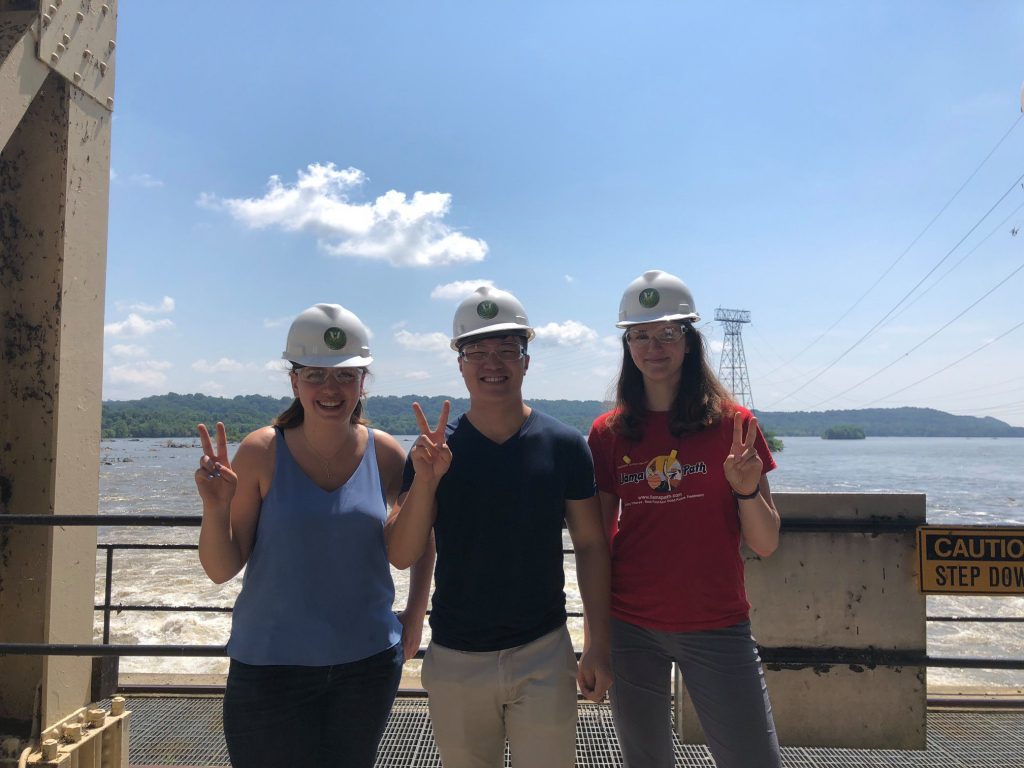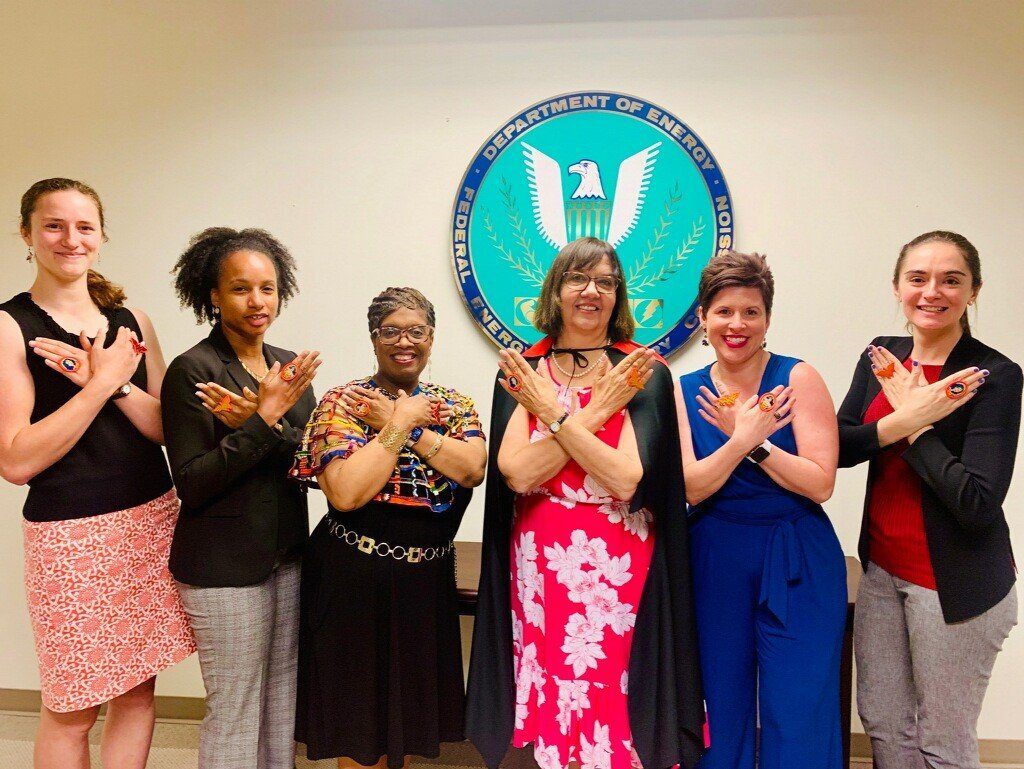By Claire Wayner

I and the two other PICS interns at FERC, Lizzie Parker and TJ Li, touring the Conowingo Dam in Maryland on a FERC intern field trip.
This summer, I’ve been working in the Office of Commissioner Cheryl LaFleur ’75 at the Federal Energy Regulatory Commission in Washington, D.C. through a PICS internship. You may think that the Federal Energy Regulatory Commission, or “FERC” as we affectionately call it, sounds really important, but you most likely also have no clue what FERC actually does (I’m actually still trying to answer this one). Think of us as an independent, bipartisan (ha) group of 1,100 energy nerds who spend all day regulating the utilities that provide America’s electricity. When you turn on the lights or the A/C, you can bet that FERC had something to do with determining where the power came from and how the infrastructure to deliver the electricity was built out.
In my specific role in Commissioner LaFleur’s office, I am working on a lot of energy and environmental policy and economics, helping our office’s three legal advisors and one technical advisor to decide how Cheryl will vote on each order which comes before us. While FERC staff can approve or deny some proposals that come before us (e.g., local utility changes its rates), most major proposals are voted on by FERC’s commissioners, of which there are currently four (there are supposed to be five, but the President hasn’t gotten around to nominating a fifth yet, which isn’t that uncommon). About half of our orders deal with changes to the electricity grid and markets (rates, tariffs, etc.), but we also approve infrastructure projects such as natural gas pipelines, liquid natural gas (LNG) export terminals, and hydroelectric dams. This latter category is what I’ve been specializing in during my work at FERC.
On a typical day, I’ll usually be digging into an environmental impact statement (EIS) for a particular project. These documents are prepared by FERC staff to summarize the effects that a project will have on the local environment — anything from removal of vegetation and loss of wetlands to water and air pollution. After I read through these, I talk about the case with Cheryl’s infrastructure legal advisor (and my direct supervisor), Cat Giljohann. We then write up a concurrence (if Cheryl supports it) or a dissent (if Cheryl doesn’t support it). One of the biggest issues we’ve been grappling with currently is the climate impact of fossil fuel projects and how FERC (in our opinion) isn’t doing enough to prescribe adequate mitigation for greenhouse gas emissions. To that effect, I’m preparing a final paper on the Social Cost of Carbon, a carbon emissions pricing tool that FERC could use to require project applicants to offset their climate impacts.
In addition to the day-to-day, working at FERC has been a really incredible opportunity for me to learn about the challenges facing our electric grid in the coming years, especially as we introduce more renewables into the energy mix. I recently finished reading a book, Superpower: One Man’s Quest to Transform American Energy by Russell Gold, all about a renewable energy entrepreneur’s efforts to transform America’s power grid into a national, unified network (instead of the fragmented hodgepodge of regional lines we have now). I’m newly fascinated with the electric grid and am looking forward to taking more energy courses during my time at Princeton. I’ve also gotten to meet fellow interns from all walks of life, go on trips to places like the Conowingo Hydroelectric Plant (which is close to my house in Baltimore, Maryland!), and make lasting relationships with Princeton alumni who currently work at FERC (thank you, Tigernet!). I can’t believe that I have only two weeks left in my internship before I head out to Peru with Princeton’s Engineers Without Borders to build a water delivery system for the rural community of Pusunchas. Thank you to Service Focus for providing this opportunity, and I’m eager to bring back what I’ve learned to my cohort this fall!

This is everyone currently in my office this summer (I’m on the far left). Our office has gone through some staffing changes because Cheryl is stepping down at the end of August, and it just so happens that last week we became an all-female office. Cat (my direct supervisor, second from right) bought us all Wonder Woman rings to commemorate the occasion, and we took this group photo.

